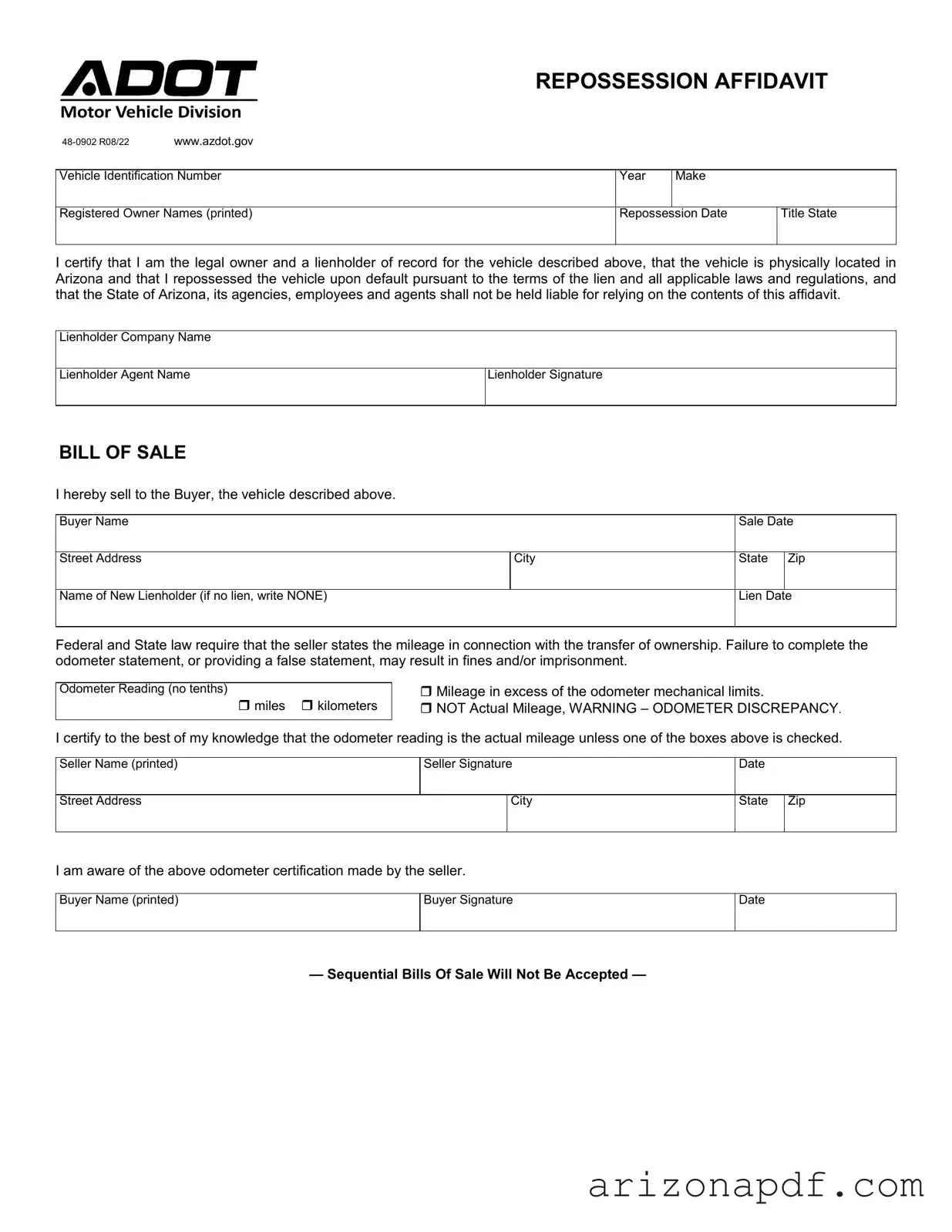What is a Repossession Affidavit in Arizona?
A Repossession Affidavit in Arizona is a legal document that a lienholder (the legal owner of the vehicle) can use to assert that they have taken possession of a vehicle due to the borrower's default on the loan terms. This document confirms that the vehicle is located in Arizona and that the repossession complied with all applicable laws and regulations. It indemnifies the State of Arizona, its agencies, employees, and agents from liability associated with the repossession.
Who needs to fill out the Arizona Repossession Affidiffavit?
Lienholders who are legally repossessing a vehicle due to the registered owner's default on the loan agreement need to fill out this form. It is crucial for the lienholder to complete and submit this affidavit to repossess the vehicle legally and properly under Arizona law.
What information is required on the Arizona Repossession Affidavit form?
Required information includes the Vehicle Identification Number (VIN), year, make, registered owner's name(s), repossession date, and the title state of the vehicle. Additionally, the lienholder must provide their company name, agent name, and signature. If the vehicle is being sold after repossession, details such as the buyer's name, sale date, and new lienholder information (if applicable) must be filled out, alongside the odometer reading and acknowledgment of the odometer statement accuracy.
How does one complete the odometer statement section?
In the odometer statement section, the seller must indicate the correct mileage of the vehicle at the time of sale. They have the option to specify whether the mileage is in miles or kilometers, and whether the reading reflects the exact mileage, exceeds the mechanical limits of the odometer, or if there is an odometer discrepancy. It is imperative that the information provided is accurate to avoid penalties such as fines and/or imprisonment for odometer fraud.
What is the significance of the Bill of Sale in the Repossession Affidavit?
The Bill of Sale section of the Repossession Affidavit formalizes the sale of the repossessed vehicle to a new owner. It requires the seller (the previous lienholder or their agent) to document the transfer of ownership to the buyer, including the sale date and the vehicle’s price, if applicable. This section ensures that the transaction is recognized legally and that the chain of ownership is correctly documented for the state records.
Are sequential Bills of Sale allowed under the Arizona Repossession Affidavit procedure?
No, sequential Bills of Sale will not be accepted according to the stipulations outlined in the Arizona Repossession Affidavit. This measure ensures that each transaction is distinctively documented and tracked to prevent fraud and enhance the integrity of vehicle transaction records in Arizona.

